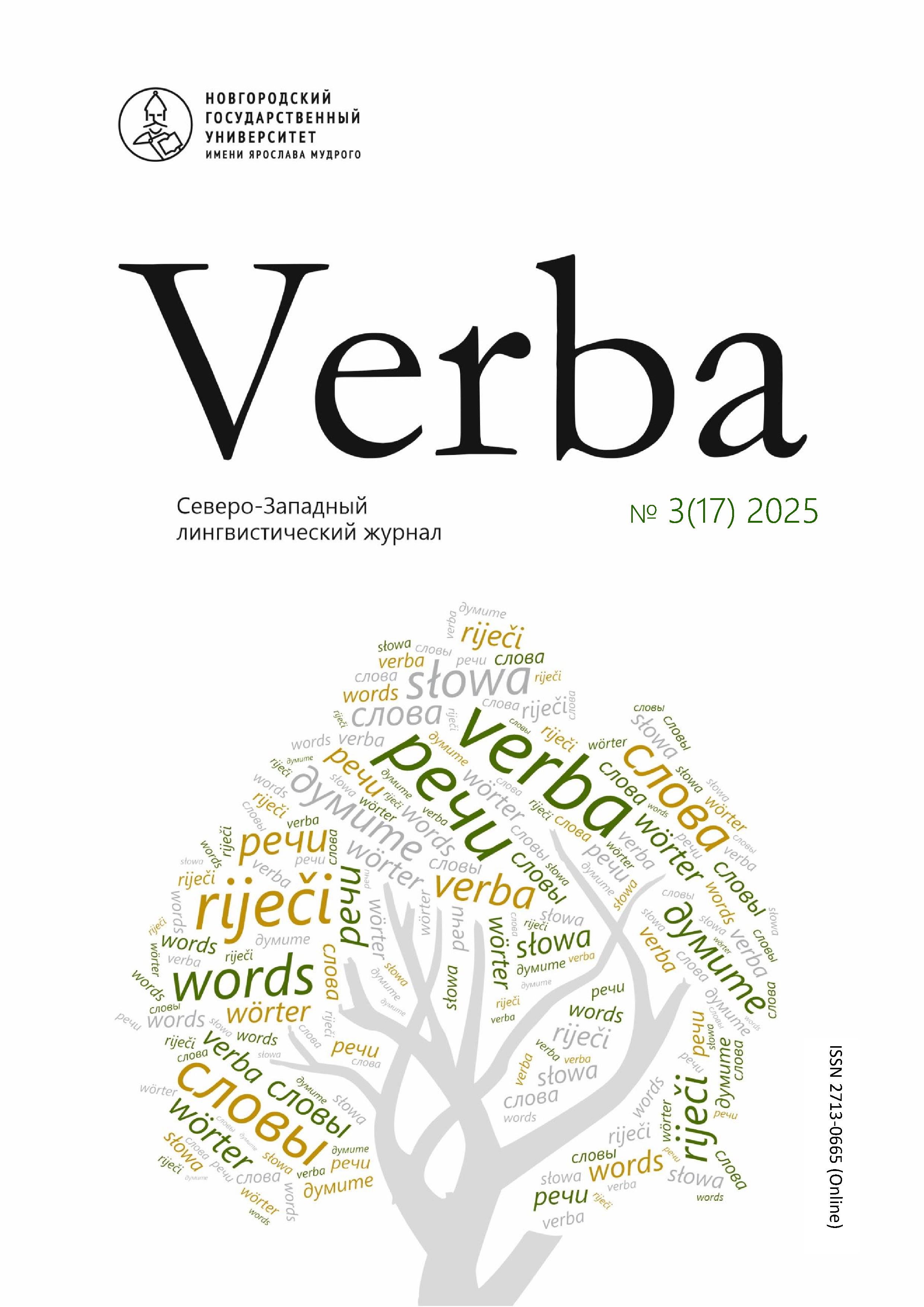Application of nominative families as method of dialectal vocabulary description
DOI:
https://doi.org/10.34680/VERBA-2025-3(17)-41-53Keywords:
animalism, dialect lexicography, ideographic dictionary, nominative family, thematic groupAbstract
The article examines words from the Novgorod Regional Dictionary that form the thematic groups “small farm animals” and “companion animals”, which have not previously been the subject of dedicated descriptions based on dialectal material. Dialectal lexicography is of great importance for the study of regional culture. The vocabulary collected in dialectal dictionaries is often the only evidence of the lives and customs of entire generations of people. When describing dialectal vocabulary, special attention is paid to developing principles for compiling thematic (ideographic) dictionaries. The author's proposed inclusion of etymological and ethnolinguistic information in the dictionary will allow us to present the general history of a dialectal word, trace its connections with other words in the same dialect, and examine the ethnographic and cultural information reflected in it, which reflects the people's life. This article presents a method for compiling an ideographic dialect dictionary entry based on nominative families, which unite dialectal names for specific aspects of everyday life. Differences in the qualitative and quantitative composition of different thematic vocabulary groups that form a common field are identified, for example, in the groups of domestic animals considered.
Downloads
Downloads
Published
How to Cite
Issue
Section
License
Copyright (c) 2025 Verba

This work is licensed under a Creative Commons Attribution-NonCommercial 4.0 International License.








